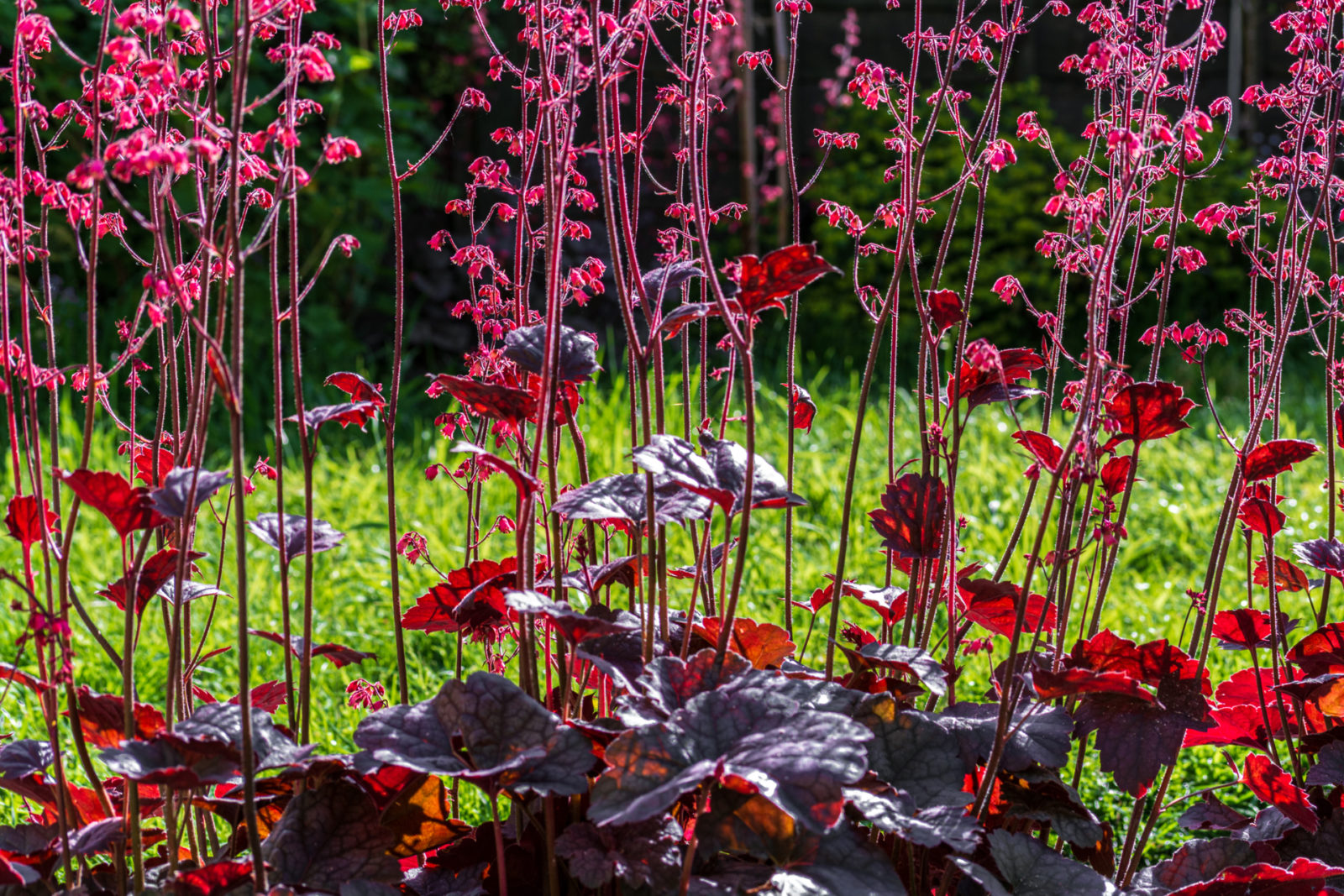Mature Heucheras Can Become Straggly And Woody: Rejuvenate Yours With These Tips

PERENNIALS > HEUCHERA > REJUVENATION

Elizabeth is a Permaculture Garden Designer, Sustainability Consultant and Professional Writer, working as an advocate for positive change. She graduated from the University of St. Andrews with an MA in English and Philosophy and obtained a Diploma in Applied Permaculture Design from the Permaculture Association.
Reviewed By ROY NICOL

Roy is a Professional Gardener and Horticultural Consultant, specialising in large garden year-round maintenance and garden development. He is an RHS Master of Horticulture and uses his research in the application of no-dig methods in ornamental garden settings. Roy has been a Professional Gardener for more than six years and is a member of the Chartered Institute of Horticulture, Professional Gardener's Guild and Association of Professional Landscapers (Professional Gardener).
IN THIS GUIDE
HEUCHERA GUIDES
Container Growing
Dividing
Rejuvenation
Varieties
Heucheras are perennial plants which can delight in many different types of gardens for a number of years.
However, as heucheras mature, they can tend to become straggly and woody at the central base.
The plants may not look as good as they once did and will not produce as many leaves and flowers.

So, to keep these plants looking their best, you might want to think about rejuvenating a mature heuchera every 3-4 years.
To rejuvenate a mature heuchera you can either:
- Lift the plant, discard the woody section, and replant strong and vigorous divisions from around the edges of the clump.
- Lift the plant, dig a deeper hole in the original position, and plant the whole plant back where it was, but with the woody sections below the surface of the soil.
More detail on these two methods can be found below.
1) Replant Strong Divisions
Rejuvenating a mature heuchera from divisions involves lifting and dividing the plant.
This process is best undertaken in the spring and is largely the same as the process described for propagating heuchera by division.
You will lift the plant and select smaller sections which look strong and vigorous from around the edges of the mature clump.
A larger division can be placed back in the place of the heuchera that had become less appealing and will grow into an identical replica of the parent plant.

Other portions of the plant can also be placed in other parts of your garden.
“It’s best to choose a location in dappled or at least part shade, as Heucheras can spoil in full sun,” shares Master Horticulturist Roy Nicol.
“Darker-leaved varieties will take more sun than lighter-coloured varieties which can scorch if too exposed.
“Moist but well-drained soil is also important, if it’s too wet the crown can rot.”
You should then simply dispose of the woody core section that is getting old and tired, placing it in your composting system.
2) Lift And Replant
However, rather than discarding the central portion of the plant, you can try replanting it by placing it a little deeper in the soil.
The aim is to replant it so that all of the woody portions are under the surface of the soil.
This is not always successful, as the woody section can often rot or develop other problems and the plant may not thrive, but this can sometimes lead to new growth and breathe new vigour back into a mature heuchera plant.
It is worth a go if you wish to retain the existing plant but rid yourself of the ugly woody sections and leggy, straggly appearance.

To increase the chances of success, it is very important to make sure that the crown (where leaves are growing from) is still above the soil surface.
It is also very important to make sure that you mulch well around the plant after you have undertaken this job.
Providing plenty of organic matter will ensure good fertility.
You might also consider adding other organic fertilisers or a liquid feed, to stimulate new growth in the spring but Heucheras do not require feeding throughout the season.
If you rejuvenate a mature heuchera every 3-4 years using one of these methods, it can continue to look good in your garden for many more years to come.
